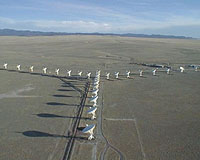 |
Edmonton, Canada (SPX) Nov 05, 2009 University of Alberta physics professor Craig Heinke has solved a mystery that lies 11,000 light years beyond Earth. A supernova (or exploding star), 20 times heavier than our sun blasted apart, leaving behind a small core that has puzzled astronomers since its discovery in 1999. Heinke and a colleague have identified the 20 kilometre-wide remnant of the supernova as a neutron star. It's the youngest neutron star ever identified, and its atmosphere, a thin layer of carbon, is one of a kind. The supernova event that created the core happened just 330 years ago. Heinke describes the core as being in its infancy compared to the much older neutron stars scientists have studied. Because of this discovery, researchers now have access to the complete life cycle of a supernova, and will learn more about the role exploding stars play in the makeup of the universe. Most minerals found on Earth are the products of supernovae. "This discovery helps us understand how neutron stars are born in violent supernova explosions," said Heinke. "This neutron star was born so hot that nuclear fusion happened on its surface, producing a carbon atmosphere just 10 centimeters thick." Heinke is co author of a research paper on the identification of the Cassiopeia A supernova remnant as a neutron star. Share This Article With Planet Earth
Related Links University of Alberta Stellar Chemistry, The Universe And All Within It
 Blast From The Past Gives Clues About Early Universe
Blast From The Past Gives Clues About Early UniverseCharlottesville VA (SPX) Oct 29, 2009 Astronomers using the National Science Foundation's Very Large Array (VLA) radio telescope have gained tantalizing insights into the nature of the most distant object ever observed in the Universe - a gigantic stellar explosion known as a Gamma Ray Burst (GRB). The explosion was detected on April 23 by NASA's Swift satellite, and scientists soon realized that it was more than 13 billion ... read more |
|
| The content herein, unless otherwise known to be public domain, are Copyright 1995-2009 - SpaceDaily. AFP and UPI Wire Stories are copyright Agence France-Presse and United Press International. ESA Portal Reports are copyright European Space Agency. All NASA sourced material is public domain. Additional copyrights may apply in whole or part to other bona fide parties. Advertising does not imply endorsement,agreement or approval of any opinions, statements or information provided by SpaceDaily on any Web page published or hosted by SpaceDaily. Privacy Statement |